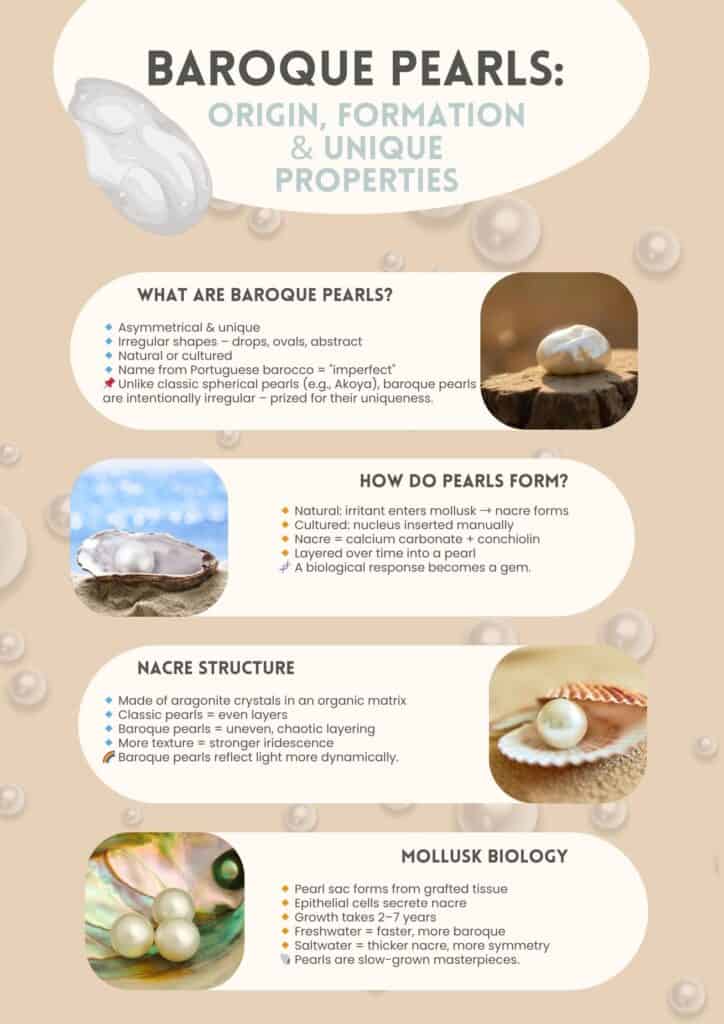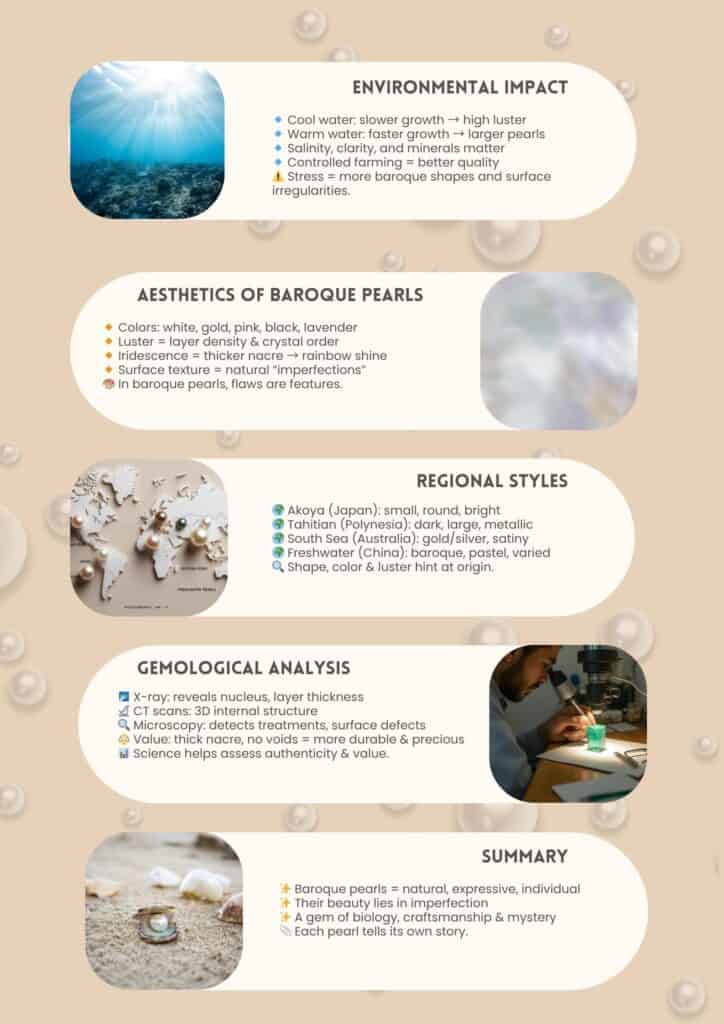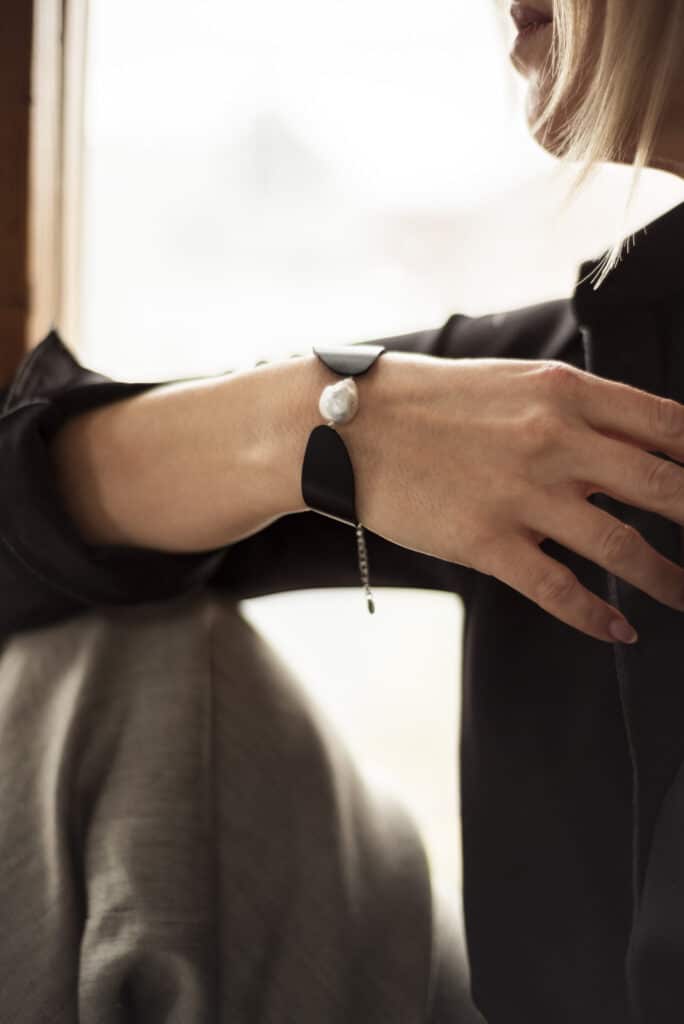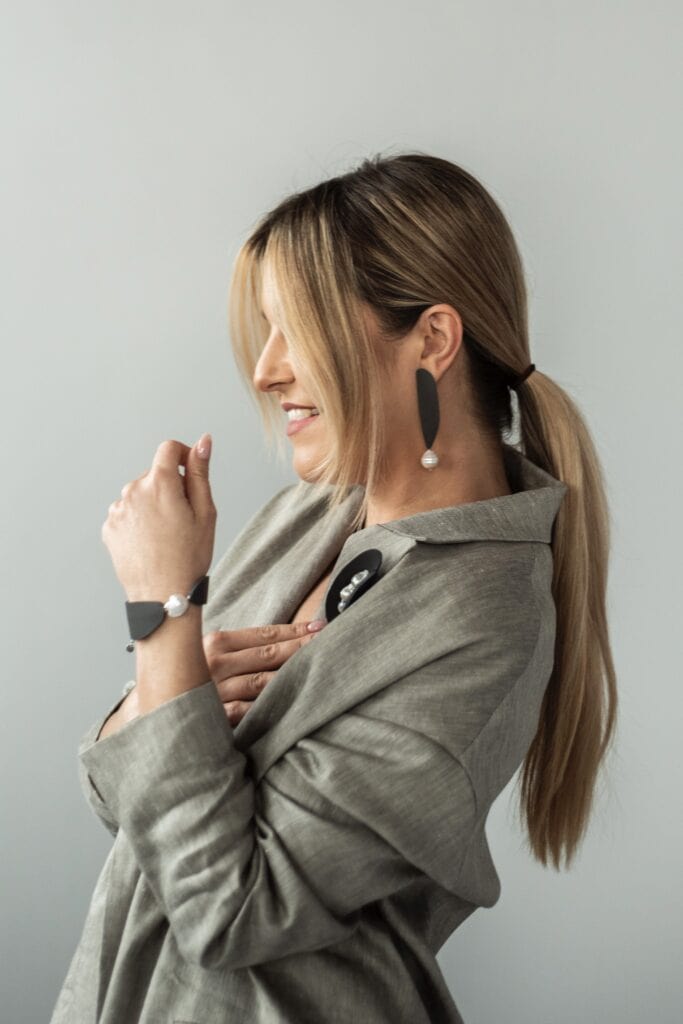You don’t have to be perfect to shine, just like baroque pearls – asymmetrical, full of character, and truly one of a kind. Discover how these fascinating gems are formed and why they’ve become a favorite in the world of artistic jewelry.
What Is a Baroque Pearl?
Baroque pearls are natural or cultured pearls with irregular, asymmetrical shapes. Unlike the perfectly round Akoya or South Sea pearls, baroque pearls feature curves, bumps, or unique organic forms.
The word baroque comes from the Portuguese barroco, meaning “imperfect.” And it’s exactly this irregularity that gives these pearls their charm. While perfectly spherical pearls are often considered the most valuable, baroque pearls are prized for their individuality and artistic beauty.

How Are Baroque Pearls Formed?
Pearls form when an irritant (like a grain of sand or a parasite) enters a mollusk. In cultured pearls, pearl farmers insert a bead or tissue fragment to trigger nacre (mother-of-pearl) secretion intentionally.
With baroque pearls, nacre layers build unevenly, leading to unpredictable and expressive shapes. Their structure also produces an intense luster and often a magical iridescent glow (called orient).

The Biology Behind the Beauty
Inside the mollusk’s mantle are epithelial cells responsible for producing nacre. These cells deposit layer upon layer of aragonite crystals and conchiolin, creating the pearl’s structure.
Baroque pearls can take 2 to 7 years to develop. Their growth depends on species, water temperature, salinity, and overall environment. Clean, stable conditions result in smoother pearls. However, environmental stress often leads to irregular, baroque shapes – making each pearl truly one-of-a-kind.






Color, Luster, and Texture: What Makes Baroque Pearls So Special?
Baroque pearls display a wide range of natural colors, influenced by the mollusk species and minerals in the water. You’ll find tones like white, ivory, rose, lavender, silver, and black.
The luster—how a pearl reflects light—depends on how tightly its nacre layers are packed. Baroque pearls with thick nacre often exhibit a soft, satin-like glow or an intense, mirror-like shine. Their irregular surfaces may show ridges, rings, or unique markings that emphasize their organic origin.
Where Do Baroque Pearls Come From?
Baroque pearls are found in both freshwater and saltwater sources around the world. Each region produces pearls with distinct characteristics:
- – Freshwater pearls (China): Often baroque, fast-growing, pastel-colored
- – Tahitian pearls (French Polynesia): Large, naturally dark, metallic luster
- – Akoya pearls (Japan/Vietnam): Small, round, high-gloss – baroque shapes are less common
- – South Sea pearls (Australia, Philippines): Golden or silver, large, with soft radiant glow

How Are Baroque Pearls Valued?
Even if irregular, baroque pearls can be highly valuable. Jewelers assess:
– Nacre thickness – thicker layers mean better durability and luster
– Surface quality – fewer blemishes increase value
– Luster and orient – the deeper the glow, the higher the quality
– Uniqueness – truly exceptional shapes can command higher prices
Gemologists often use X-ray or CT scans to examine internal structures and determine authenticity.
Why Choose Baroque Pearls?
Because they break the mold.
Baroque pearls represent authenticity, individuality, and timeless beauty. They’re perfect for anyone who appreciates craftsmanship, nature’s artistry, and jewelry with character. Whether in earrings, necklaces, or rings – no two baroque pearls are ever alike.
In a world chasing perfection, baroque pearls remind us that true beauty lies in imperfection.







